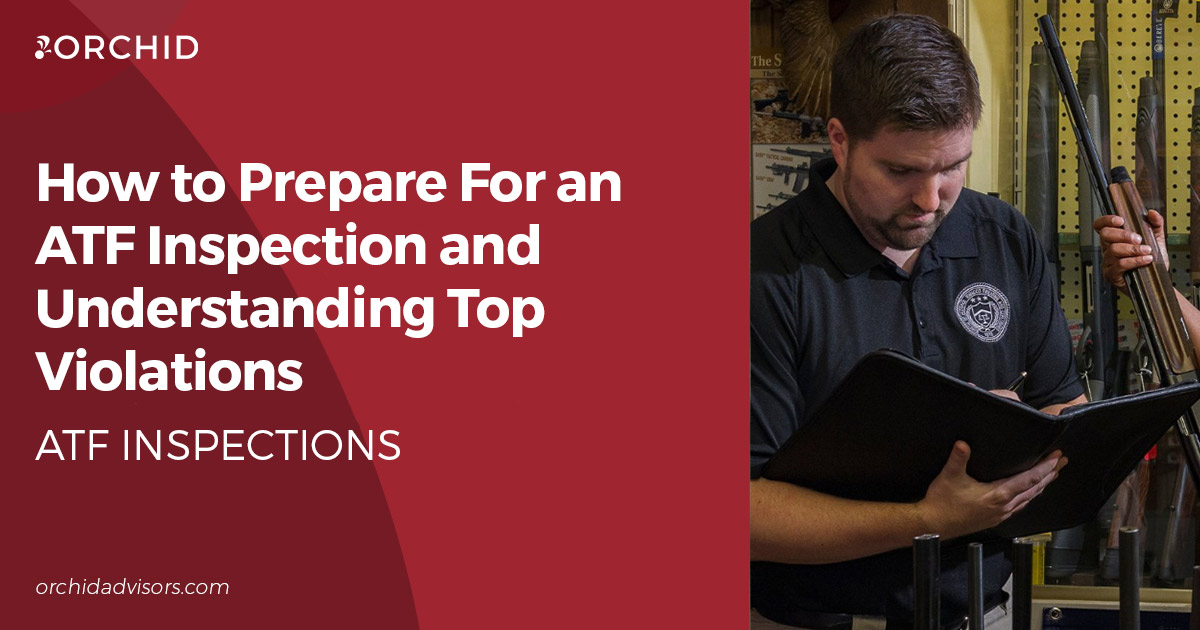As a Federal Firearm Licensee (FFL), your role in the firearms industry is crucial for ensuring lawful transactions and maintaining the safety of the community. The Bureau of Alcohol, Tobacco, Firearms and Explosives (ATF) plays a pivotal role in regulating and overseeing the industry. Understanding ATF inspections and preparing for them can help you ensure compliance and foster a successful business. Let’s delve into the key aspects of ATF inspections and how you can be prepared.
ATF Overview: A Snapshot
The ATF is divided into 25 Field Divisions across the East, Central, and Western regions of the United States. With a total of approximately 5,099 employees, including 2,586 Special Agents and 816 Industry Operations Investigators (IOIs), the ATF monitors and enforces federal firearm regulations. This is imperative given the firearms industry’s scope, which encompasses 136,563 active FFLs nationwide.
Types of FFLs and Inspection Types
FFLs come in various types, including dealers, pawnbrokers, collectors, manufacturers, and importers. ATF data from indicates 136,563 active FFLs:
ATF inspections occur in four primary scenarios: on-site application inspections, compliance inspections, renewal inspections and recall inspections. These inspections are unannounced and aim to verify compliance with regulations and ensure the proper execution of business operations.
- On-Site Application Inspections: These inspections evaluate new applicants, ensuring compliance with regulations and verifying the accuracy of information provided.
- Compliance Inspections: Conducted at varying intervals, these unannounced inspections assess ongoing compliance with federal laws and regulations.
- Renewal Inspections: These inspections occur during the renewal process to verify that the FFL has maintained compliance since the previous inspection.
- Recall Inspections: These are follow-up compliance inspection associated with inspections resulting in Warning Letters, Area Supervisor or Director of Industry Operations (DIO) Warning Conferences
In the 2022 fiscal year there were 6,979 compliance inspections. Of these inspections only 54% resulted in no violations. Firearms compliance inspections resulted in the following recommendations:
Top 10 Most Frequently Cited Violations in FY 2022
The top ten cited violations in FY 2022 included issues related to accurate record-keeping, form completion, verification, and documentation.
What ATF Looks for During an Inspection and How to Prepare
During an inspection, ATF IOIs assess several critical factors. These include verifying ownership and control status, confirming business premise accuracy, assessing compliance with relevant laws and regulations, evaluating firearm safety and inventory security measures, reviewing records for accuracy, and examining compliance with specific ATF rulings.
Facing an ATF compliance inspection can be a nerve-wracking experience. To ensure a smooth ATF inspection and avoid violations, FFLs can take proactive steps.
1) Address Past Violations
Prior inspection history matters. Before an upcoming inspection, meticulously review any past violations noted by the ATF. Take corrective action to ensure that these violations have been addressed and rectified. By demonstrating your commitment to compliance improvement, you can avoid repeat violations.
2) Know Your Business Infrastructure
Thorough knowledge of your business infrastructure is vital. Understand every facet of your operations, including the condition of your records, pending actions with the National Instant Criminal Background Check System (NICs) or Point of Contact (POC), and inventory control methods. This familiarity enables you to confidently discuss your operations during the inspection.
3) Ensure ATF Ruling Compliance
Stay up-to-date with ATF rulings, particularly ATF Ruling 2021R-05F and 2021R-08F. If your FFL involves Privately Made Firearms (PMFs), ensure compliance with these rulings, as they play a critical role in the inspection process.
4) Establish an Internal Compliance Program
Creating an internal compliance program demonstrates your commitment to maintaining lawful operations. This program, whether self-developed or Orchid-sponsored, should outline your processes for adhering to ATF regulations. It ensures consistent and uniform execution of business operations, helping to prevent inadvertent violations.
5) Maintain Accurate Records
Accurate record-keeping is non-negotiable. Ensure that inventory balances, transaction records, and disposition entries are not only complete but also timely filed and meticulously organized. Whether your records are electronic or paper-based, their accuracy serves as a foundation for a successful inspection.
6) Timely Submission of Disposition Forms
Pay special attention to ATF Form 3310.4, which covers multiple handgun or long gun dispositions. Ensure that these forms are not only complete but also submitted in a timely manner. Timeliness is key to demonstrating your commitment to compliance.
7) Consistency in Corrections
Inconsistencies in corrections can raise red flags during inspections. Ensure that your methods for making corrections on Acquisition and Disposition (A&D) forms and ATF Form 4473 align with the Gun Control Act (GCA) and relevant ATF rulings. This alignment showcases your meticulous attention to detail and adherence to regulations.
8) Utilize the Most-Cited Violation List
The list of most frequently cited violations serves as an invaluable guide. Regularly reference this list to proactively address potential compliance pitfalls and to keep your business on the right track.
9) Engage in Transparent Communication with IOIs
During the inspection, open and transparent communication with the ATF Industry Operations Investigator (IOI) is crucial. Discuss your business practices, review your record-keeping and inventory systems, and address any questions the IOI might have. This dialogue helps prevent misunderstandings and misinterpretations of your operations.
10) Highlight Security Measures and Best Practices
Your commitment to security and best practices matters. Share details about your security measures and your positive relationship with local law enforcement agencies. Demonstrate your diligence in adhering to opening and closing procedures, meticulous inventory management, and your dedication to public safety.
Conclusion
Navigating ATF inspections is an integral part of being a responsible FFL. By better understanding the ATF, inspection types, top violations, and compliance strategies, you can take proactive steps to ensure a successful inspection outcome. Remember, ATF’s zero-tolerance violations underscore the importance of accurate record-keeping, adherence to regulations, and cooperation during inspections. With preparation, diligence, and a commitment to compliance, you can contribute to a safer firearms industry while fostering a thriving business.
ATF Source:
https://www.atf.gov/resource-center/fact-sheet/fact-sheet-facts-and-figures-fiscal-year-2022
Legal Disclaimer:
Nothing in this article should be interpreted as legal advice. The information in this article is not intended to substitute for professional legal advice and does not create an attorney-client relationship. You should accept legal advice only from a licensed legal professional with whom you have an attorney-client relationship.








0 Comments